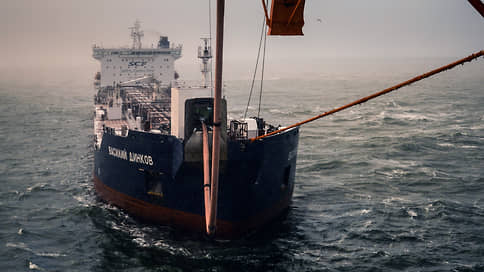Kommersant calculated how much oil the company redirected to the Northern Sea Route
[ad_1]

As Kommersant learned, Russian oil supplies along the Northern Sea Route to China this year will not exceed 1.5 million tons. During the summer-autumn navigation, Russian oil companies shipped 14 shipments along the Northern Sea Route, most of which belonged to Gazprom Neft. However, experts note that compared to the first flights, delivery time has been significantly reduced, and now it is less than along the alternative route through the Suez Canal.
Russian oil companies managed to send about 1.5 million tons of oil to China via the Northern Sea Route (NSR) in 2023, according to data from Kpler and the Gekon consulting center (available to Kommersant). These volumes include oil from the Baltic ports (Primorsk and Ust-Luga), Murmansk, as well as a shipment of oil from the Novoportovsky cluster shipped through the Arctic Gate terminal – a total of 14 voyages, the largest number being carried by Gazprom Neft. Thus, five flights were carried out from Primorsk, one from Ust-Luga, and seven more from the offshore transshipment complexes of the port of Murmansk. In 2022, Gazprom Neft sent only one oil tanker along the NSR from Murmansk.
Rosatom confirmed to Kommersant the volumes of transportation. The state corporation added that the tanker NS Arctic in the Kara Sea will soon be escorted by the icebreaker “50 Let Pobeda”.
So far, the volume of supplies along the NSR does not look ambitious and amounts to only 0.3% of Russian oil production. According to Kommersant’s interlocutor, it was assumed that Russian oil companies, “given favorable ice conditions,” will transport about 2.5 million tons this year along the NSR.
The idea of redirecting oil flows to the NSR, which after the introduction of Western sanctions from Russian Baltic ports went to China through the Suez Canal, was outlined by Rosatom head Alexei Likhachev at a meeting with Russian President Vladimir Putin in May. Under the sanctions, Mr. Likhachev called the NSR “the safest and most attractive route.” However, initially the attractiveness of the NSR was questionable, since during the first flights it was not possible to achieve significant time savings compared to the option via Suez. However, subsequently the time it took to complete the route was reduced.
Gazprom Neft has become the largest supplier of oil to the Northern Sea Route, shipping ten shipments of oil along this route, two each to Rosneft and LUKOIL, notes Victor Katona from Kpler. The delivery time for the first shipment from Ust-Luga was about 50 days; later, only Primorsk remained from the Baltic ports, and the delivery time for shipments loaded in September was reduced to just over 30 days. The tankers loaded in October – NS Arctic and SCF Baltica – have permission to navigate the NSR due to expire on November 15. Therefore, the analyst believes that these are their last voyages along the Northern Sea Route this year: given that unloading will take place at the end of October – beginning of November, it is unlikely that the ships will have time to return before the ice situation in the Eastern Arctic worsens. The head of the Gekon consulting center, Mikhail Grigoriev, agrees with this assessment.
During July-October, through the Northern Sea Route from west to east, 11 tankers of Aframax and Suezmax sizes performed 13 cargo voyages (tankers SCF Baltica and NS Arctic – two voyages each, the latter not yet completed), notes Mikhail Grigoriev. Ten of the 11 tankers are managed by Sovcomflot. Ten voyages were carried out by Aframax vessels, three by Suezmax. According to his information, the largest number of ships (five) have ice class Ice3, two have Arc4, one has Arc5, and three more do not have ice class. At the same time, only the first two voyages of ice class Ice3 vessels were completed under icebreaker assistance. Excluding the first two voyages, when tankers from Primorsk and Ust-Luga stood on the Northern Sea Route awaiting icebreaker support (their voyages lasted 49 and 52 days), the duration of voyages from Murmansk to the ports of China ranged from 23 to 35 days, from Primorsk – from 33 to 38 days, notes Mr. Grigoriev.
By comparison, the route from the Baltic ports to the ports of southern China via Suez takes about 45 days, with cargo owners having to bear the cost of passage through the canal.
[ad_2]
Source link





